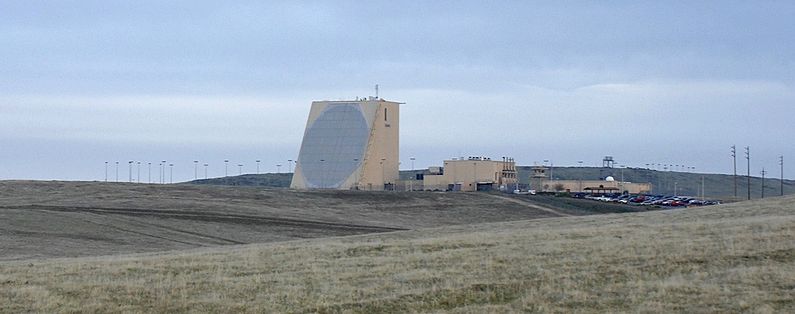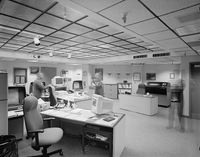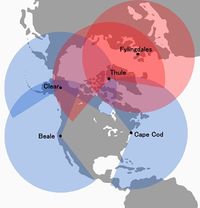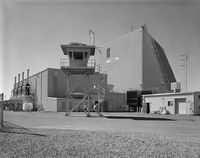Beale AFB Pave Paws Radar Site
|
Beale AFB Pave Paws Radar Site (1979-Present) - A Cold War U.S. Air Force Pave Paws System Missile Warning Radar Site. Established in 1979 on Beale Air Force Base near Marysville, Yuba County, California. Active radar site on Beale Air Force Base. HistoryEstablished in 1979 and became operational in 1980 as the Beale AFB Pave Paws Radar Site manned by the 7th Missile Warning Squadron. Initial equipment included two FPS-115 phased array radar systems. Subsequent hardware and software upgrades to the FPS-115 changed the designation first to FPS-123 and finally to FPS-132 under the auspices of the Missile Defense Agency and its Upgraded Early Warning Radar (UEWR) program. The 7th Space Warning Squadron operates and maintains the facility with contractor support. They are primarily responsible for detecting sea-launched ballistic missiles (SLBMs) fired from submarines in the Pacific Ocean and ICBMs launched toward North America. The operations component of the unit then determines how many missiles were launched and their probable targets, and reports that to:
This unit helps form a two-layered, worldwide network of missile warning systems. This is a warning mission only without any interception or destruction component. The 7th Space Warning Squadron also supports the Ground-Based Midcourse Defense (GBMD) element of the Ballistic Missile Defense System (BMDS). This program's objective is the defense of the United States against a threat of a limited strategic ballistic missile attack. The FPS-132 UEWR detects, acquires, and tracks inbound missiles to provide the necessary data to classify and engage the targets. This target data allows the GMD Fire Control and Communications element to generate a weapons task plan, allowing for the engagement, interception, and negation of threat of a ballistic missile reentry vehicle in the exoatmospheric region of space. This is the interception/destruction mission conducted under the auspice of the Missile Defense Agency since its establishment in 2002. The 7th Space Warning Squadron helps track earth-orbiting satellites, and reports the information to the Joint Space Operations Center (JSpOC) at Vandenberg Air Force Base, California. This information is then combined with information from other sensors to form a satellite catalog that tracks the more than 16,000 objects in orbit.
Physical PlantThe two original Pave Paws FPS-115 radars were housed in a 105 foot high building with three sides, two of which were active. Each of the two active sides contained 1,800 individual radar transmitters and receivers. The active sides were tilted back 20 degrees to allow for an elevation deflection from 3 to 85 degrees above the horizon. A computer controlled the activation of individual radar elements providing a moving radar beam. This building is known as the technical equipment building and houses the operations and maintenance components as well as the equipment. Adjacent to the technical equipment building is the power building housing diesel generators that can supply power to the radars should commercial power become unavailable. A separate building houses communications and satellite equipment linking the site to the agencies using the radar data. A security tower and a security building at the entrance to the compound provide access control. Surrounding the compound are two concentric fences, the inner fence is a security fence to provide access control for the compound and the outer fence creates an exclusion zone to keep people and animals out of the radiation pattern. Housing and support facilities are provided by Beale Air Force Base.
Current StatusActive military site in Marysville, Yuba County, California.
See Also:
Sources:
Links:
Visited: area 11 Oct 2015
| ||||||||||||||||||||||||||||||||||||||||||||||||||||||||||||||||||||||||||||||||||||||||||||||||||||||||||||||||||||||||||||||||||||||||||







